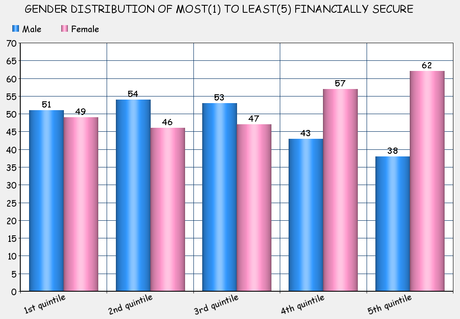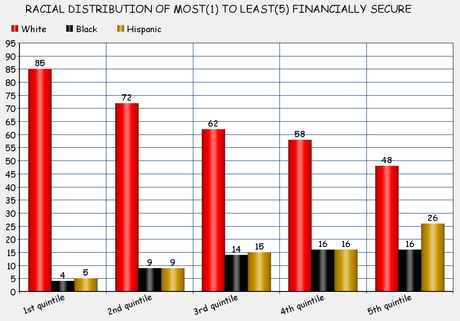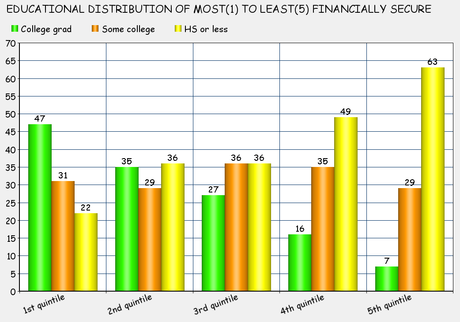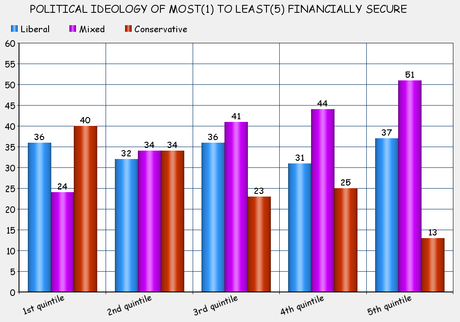



We often talk about the rich and the poor in the United States -- but we don't often define exactly what groups make up the rich and poor (or those in the middle). That's why I found this article from the Pew Research Center interesting -- because it shows us who makes up the various quintiles of our society (in gender, race, education, and age). The first quintile represents those with the most wealth and income (the most financially secure) and the fifth quintile represents those with the least wealth and income (the least financially secure) -- i.e., the first quintile is the richest Americans, and the fifth quintile is the poorest Americans.
This survey is based on the American Trends Panel created by the Pew Research Center, and is made up of 3,154 respondents. This current survey was done between September 9th and October 3rd of 2014, and has a margin of error of 2.7 points.
The results of the survey are not really very surprising. It shows that Whites, males, older Americans, and college graduates are more likely to be in the higher quintiles, while minorities, women, younger Americans, and those with a HS education or less are more likely to be in the lower quintiles.
It's somewhat comforting that years of work and education can help propel people up the economic ladder, because those are factors that people can generally control (although it has become very difficult for the lower quintiles to afford to get a college degree). Much more troubling is the fact that financial security also has a great deal to do with the gender or race of a person (factors that cannot be individually controlled).
The survey also looked at the politics of the various quintiles (see charts below). Note that the higher quintiles are more likely to be conservative, while the lower quintiles are more likely to have a mixed ideology (moderate). Liberal ideology is fairly constant across all quintiles (although it has a higher percentage than conservatism among the lower three quintiles).
To me, this seems to say that Democrats have the advantage among the middle to lower quintiles of Americans. But there is a problem there. As the bottom chart shows, the amount of people registered and likely to vote goes down with those quintiles, and are significantly less than the two upper quintiles.
The lower 60% of Americans (bottom three quintiles) represents a real opportunity for the Democratic Party, but Democrats needs to make a huge effort to reach those people, get them registered, and get them to the polls. It's not going to happen by itself.



